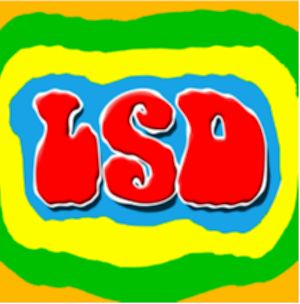 |

LSD
The notorious hallucinogenic drug
(6aR,9R)-N,N-diethyl-7-methyl-4,6,6a,7,8,9-
hexahydroindolo[4,3-fg]quinoline-9-carboxamide

Paul May
Bristol University

Molecule of the Month December 1998
(Updated July 2017)
Also available: HTML version.

|
LSD – that’s ‘acid’ right?
Yes, technically it’s lysergic acid diethylamide, or just “acid”. It’s also known as LSD25, or colloquially as cubes, pearly gates, heavenly blue, royal blue, wedding bells, sugar, sugar lump, big D, blue acid, the chief, the hawk, instant Zen, etc.
I’ll stick to LSD. How long have people known about it?
Well, the story starts with a fungus called Claviceps purpurea which can grow parasitically on some cereals such as rye, particularly in wet summers. It forms fungal growths known as ergot. These growths resemble cereal grain and contain ergot alkaloids including lysergic acid, from which LSD is derived.
In the Middle Ages, the flour used to make bread was sometimes contaminated with this infected grain. Many people died from ergot poisoning, some 40,000 during an outbreak in 994AD; some got gangrene, others had epileptic type fits and convulsions known as St Anthony’s fire, or experienced hallucinations. Ergotism may also explain the hysterical attacks in Salem, Massachusetts in 1692 that led to the Salem witch trials, though this is disputed, and it may even be one of the factors that led to the French Revolution in 1789. More recently, there was an outbreak in some parts of Southern Russia in 1926-7, and in August 1951 there was a mysterious outbreak in the Provencal village of Pont Saint Esprit... |
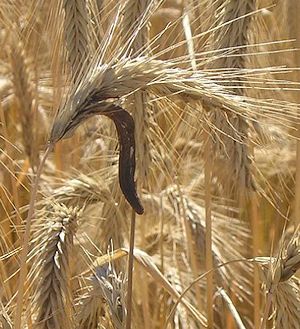
Rye infected by ergot.
The ergot kernel is the darker husk drooping down from the ear of rye. |
So ergot's no use?
Since the 16th century, ergot has had medicinal uses, originally to induce contractions and bring about childbirth. The early 1930s brought a new era in ergot research, beginning with the determination of the chemical structure of the main chemically active agents, the ergot alkaloids. Finally, W.A. Jacobs and L.C. Craig of the Rockefeller Institute of New York succeeded in isolating and characterizing the structure common to all ergot alkaloids. They named it lysergic acid after the process of lysis – the process of breaking down of cells that releases their contents.
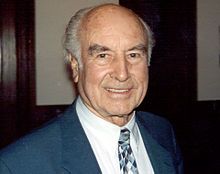 In 1938, the Swiss chemist Albert Hofmann (photo, right), made an ergotamide drug to be used to stop bleeding during childbirth. It was given the code name LSD-25 as it was the 25th lysergic acid derivative synthesised by Hofmann. In April 1943, he accidentally ingested some of it (probably via his hands) and discovered its propensity to cause hallucinations. Three days later, on April 19, 1943, he deliberately ingested 0.25 mg of LSD, and discovered that it was much more potent than other ergot alkaloids. His diary, written later, continues the story:
In 1938, the Swiss chemist Albert Hofmann (photo, right), made an ergotamide drug to be used to stop bleeding during childbirth. It was given the code name LSD-25 as it was the 25th lysergic acid derivative synthesised by Hofmann. In April 1943, he accidentally ingested some of it (probably via his hands) and discovered its propensity to cause hallucinations. Three days later, on April 19, 1943, he deliberately ingested 0.25 mg of LSD, and discovered that it was much more potent than other ergot alkaloids. His diary, written later, continues the story:
“Here the notes in my laboratory journal cease. I was able to write the last words only with great effort. By now it was already clear to me that LSD had been the cause of the remarkable experience of the previous Friday, for the altered perceptions were of the same type as before, only much more intense. I had to struggle to speak intelligibly. I asked my laboratory assistant, who was informed of the self-experiment, to escort me home. We went by bicycle, no automobile being available because of wartime restrictions on their use. On the way home, my condition began to assume threatening forms. Everything in my field of vision wavered and was distorted as if seen in a curved mirror. I also had the sensation of being unable to move from the spot. Nevertheless, my assistant later told me that we had traveled very rapidly. Finally, we arrived at home safe and sound, and I was just barely capable of asking my companion to summon our family doctor and request milk from the neighbors.”
A. Hofmann, LSD: My Problem Child
(Courtesy of The Multidisciplinary Association for Psychedelic Studies (MAPS),
The Beckley Foundation, and Albert Hofmann)
Hofmann survived his LSD trip and woke up next morning feeling very clear-headed; in fact he survived until he died on April 29th 2008, aged 102.
So LSD became a useful drug?
In the post-war period, it became a research chemical, investigated by psychologists and psychiatrists looking for applications in psychoanalysis. The CIA tested it on servicemen and on members of the public as a possible mind-control agent. In 2008 it was alleged that the outbreak of “ergotism” in the peaceful French village of Pont Saint Esprit in 1951 was nothing of the sort, but due to food spiked with LSD in a CIA experiment.
Timothy Leary, a Harvard academic, had been involved in testing LSD and became consumed by its possibilities; President Richard M. Nixon once called him “the most dangerous man in America”. As the 1950s moved into the 1960s, Leary became an advocate for LSD, which entered the counter-culture as a recreational drug and entheogen (a drug which supposedly makes the user feel more spiritually aware), with claims that its users accessed higher states of consciousness and helped them search for religious enlightenment. Aldous Huxley took it on his deathbed on November 22nd 1963, the same day that John F. Kennedy was assassinated. Many of the great 1960s rock groups took LSD and there were overtones of it in both lifestyle and lyrics. Just think of The Byrds, The Beach Boys, Jefferson Airplane and the Grateful Dead, whilst the Beatles created one song that was immediately linked with LSD in the public consciousness due to its psychedelic lyrics and chorus that had the initials LSD. |
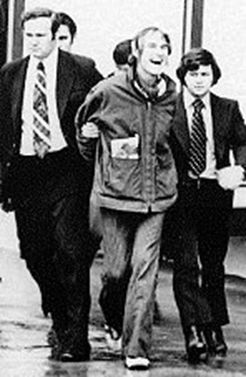
Timothy Leary being arrested in 1972 |

The Beatles in their psychedalic period. |
"Picture yourself in a boat on a river with tangerine trees and marmalade sky,
Somebody calls you, you answer quite slowly, a girl with kaleidoscope eyes.
Cellophane flowers of yellow and green towering over your head.
Look for the girl with the sun in her eyes and she's gone."
Lucy in the Sky with Diamonds - The Beatles. |
John Lennon, however, always insisted that the song wasn’t about LSD but was inspired by the vivid images in a picture his son, Julian, drew while at nursery school, insisting, “I had no idea it spelt LSD.” Paul McCartney too, backs up this story, saying that he and John had spent an evening writing lyrics about ‘cellophane flowers’ and ‘ newspaper taxis’, and: “We never noticed the LSD initial until it was pointed out later – by which point people didn’t believe us.” Nearly 50 years on the controversy over this song still rages…
This era reached its climax in the 1967 'Summer of Love' in the Haight-Ashbury district of San Francisco, but it went downhill from there. The following year, Haight-Ashbury was plagued by intravenous use of methamphetamine (see MOTM page on methamphetamine) whilst concern spread that there were psychological risks to some LSD users.
In the 1980’s LSD made a comeback, accompanying the new recreational drug Ecstasy (MDMA, see MOTM page on methamphetamine) in the rave and dance club scene, in what became known as ‘acid house’. Much of this was supplied to Europe from a lab in the US run by William Leonard Pickard and Clyde Apperson, both of whom are now serving long sentences in prison. At the peak of production their lab was making 1 kg of LSD every 5 weeks. After the lab was raided and shut down in 2000, it is believed that LSD supply dropped by 90%, although it has gradually risen again over the successive years.
Is it safe?
Although LSD is thought generally to be non-toxic and non-addictive, various governments around the world outlawed it after a number of fatal accidents were reported. Some accidents allegedly involved people under the influence of LSD jumping to their deaths off high buildings thinking they could fly. Research in the 60's and 70's showed that there was also a considerable psychological risk with the drug and that high doses, especially in inappropriate settings, often caused panic reactions. The effects not only depended upon the individual, but upon their setting. A blue sky could bring on euphoria but a passing cloud might result in a massive “down”. For individuals who have a low threshold for psychosis, a bad LSD trip could be the triggering event for the onset of full-blown psychosis. Years after people have stopped taking LSD, powerful flashbacks can occur. Research on potential therapeutic uses of LSD was abandoned for political reasons in the mid-1970s.
|

LSD is often absorbed in paper strips or tabs, and then placed into the mouth. |
What dose is needed?
Doses as low as 20-25 μg are capable of producing marked effects. LSD is in fact a very powerful psychoactive drug, as even 10 μg can produce symptoms, though a “normal” dose would be in the range 50-100 μg. Because the dose is so low, LSD is usually administered either as microdots or small squares of blotting paper that have been infused with a drop of LSD solution.
How does LSD work?
LSD has two chiral centres, but only (+)-LSD, with the absolute configuration (5R,8R), is psychoactive. LSD is structurally related to mescaline and to 2-phenylethylamine, which is a parent of a group of drugs known as the amphetamines that act on the central nervous system carrying messages to the brain (see MOTM page on methamphetamine). Whilst this area is still open for research, some scientists think that LSD may compete with and block the action of the neurotransmitter molecule serotonin (see MOTM page on serotonin). It’s interesting to spot that serotonin and LSD share the same core structure, an indoleamine group. The belief is that because LSD binds to the nerve receptor more strongly than serotonin, it effectively blocks it and prevents further signals passing along that nerve. Subsequent impulses therefore have to use different nerve pathways, which pass through lesser used parts of the brain. It’s like when a main road into a city gets blocked by a traffic-jam, the cars then have to by-pass the road-block and take side-roads through the suburbs. In the case of the brain, impulses travelling through the ‘suburbs’ of the brain create all sorts of unusual effects, which are experienced as hallucinations, mood changes, altered states of consciousness, etc.
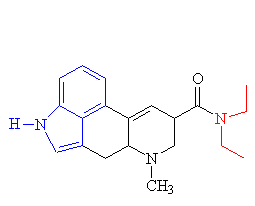 |
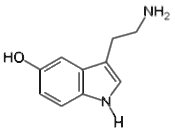 |
 |
The structure of LSD.
The diethylamide group is shown in red
and the indole ring in blue.
|
Serotonin |
Indoleamine |
|
|
|
Why do people take LSD?
Good question. It alters perception, produces distorted images, intense light and vivid colours; stationary objects seem to move. The person may seem to be removed from time and space; feelings of ecstasy and terrified doom are both possible. The effects vary unpredictably from one person to another and depend upon the user’s mood at the time.


Bibliography
- D. E. Smith, California Medicine, 1969, 110, 472-476 (LSD and Haight-Ashbury)
- L. R. Caporael, Science, 1976, 192, 21-26; N. P. Spanos and J. Gottlieb, Science, 1976, 194, 1390–4. (Ergotism and Salem)
- A. Hofmann, LSD: My Problem Child, (Multidisciplinary Association for Psychedelic Studies (MAPS), Saratosa, USA. ISBN: 0-9660019-8-2, p48), and The Beckley Foundation, Oxford UK (ISBN: 978-0-19-963941-0, p.19).
- J. Stevens, Storming Heaven: LSD and The American Dream, London, Heinemann, 1988.
- M. K. Matossian, Poisons of the past: molds, epidemics, and history, New Haven, Yale University Press, 1989 (ergotism and history)
- D. M. Perrine, The Chemistry of Mind-Altering Drugs, Washington DC, American Chemical Society 1996 esp. pp 259-278
- M. A. Lee, Acid Dreams: The Complete Social History of LSD, New York, Grove Press, 2000.
- L. Schardl, D. G. Panaccione and P. Tudzynski, The Alkaloids, 2006, 63, 45-86 (ergot alkaloids rev.)
- J. González-Maeso, N. V. Weisstaub, M. Zhou, P. Chan, L. Ivic, R. Ang, A. Lira, M. Bradley-Moore, Y. Ge, Q. Zhou, S. C. Sealfon, J. A. Gingrich, Neuron, 2007, 53, 439-52 (LSD and signalling pathways).
- A. Roberts, Albion Dreaming: A Popular History of LSD in Britain, London, Marshall Cavendish, 2008.
- H. P. Albarelli, Terrible Mistake: The Murder of Frank Olson and the CIA's Secret Cold War Experiments, Waterville, Trine Day, 2008.
- J. Mann, Turn on and Tune in: Psychedelics, Narcotics and Euphoriants, Cambridge, Royal Society of Chemistry, 2009, pp 1-25.
- Lyrics to ‘Lucy in the Sky with Diamonds’, written by John Lennon, 1966, copyright EMI records, Ltd.


 Back to Molecule of the Month page.
Back to Molecule of the Month page.

![]()
![]()
![]()
![]()

 In 1938, the Swiss chemist Albert Hofmann (photo, right), made an ergotamide drug to be used to stop bleeding during childbirth. It was given the code name LSD-25 as it was the 25th lysergic acid derivative synthesised by Hofmann. In April 1943, he accidentally ingested some of it (probably via his hands) and discovered its propensity to cause hallucinations. Three days later, on April 19, 1943, he deliberately ingested 0.25 mg of LSD, and discovered that it was much more potent than other ergot alkaloids. His diary, written later, continues the story:
In 1938, the Swiss chemist Albert Hofmann (photo, right), made an ergotamide drug to be used to stop bleeding during childbirth. It was given the code name LSD-25 as it was the 25th lysergic acid derivative synthesised by Hofmann. In April 1943, he accidentally ingested some of it (probably via his hands) and discovered its propensity to cause hallucinations. Three days later, on April 19, 1943, he deliberately ingested 0.25 mg of LSD, and discovered that it was much more potent than other ergot alkaloids. His diary, written later, continues the story:





